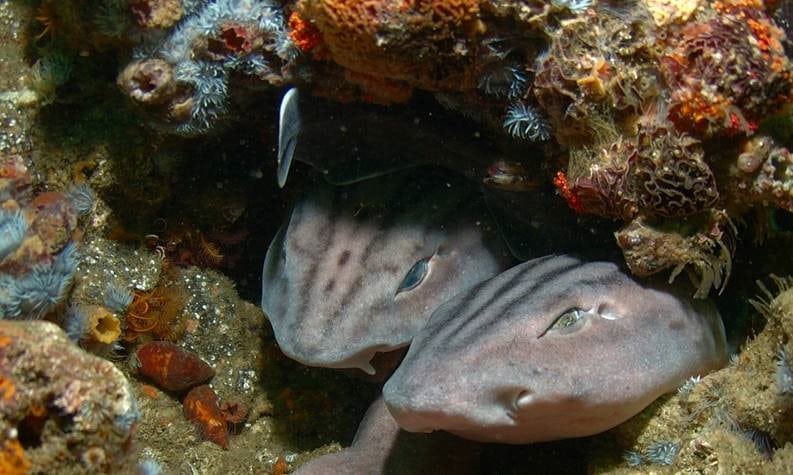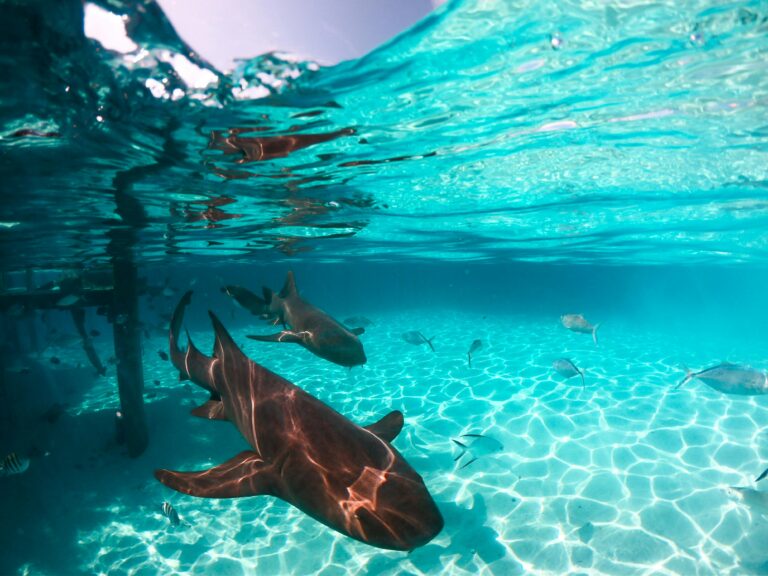By Kiara Homan
There are over 500 different shark species worldwide. Many have adapted their characteristics to survive their environment. Most of us know the majestic and powerful apex predator sharks who frequent waters where humans are found, but many smaller species are rarely sighted. In this article, we discuss some of the rarest shark species in the world.
These are the Worlds Rarest Shark Species

The Gurry shark, or the Greenland shark, is one of these rare species that have alluded humans for many years. First spotted in Greenland, these massive sharks also are found in the Northern Atlantic near Iceland, Norway, and Canada. These sharks are comparable to the size of a great white shark and are known to
grow 6.4 meters long and weigh 400 kg. Their meat is poisonous because of the TMAO enzyme that allows them to exist in such cold temperatures, although these sharks are still hunted for their meat as when cured for a few months these toxins are gone. Unlike their size counterpart, Gurry sharks are non-confrontational and prefer to cruise around 2200 meters and scientists believe they go deeper to avoid being detected, and since they are scavengers, this is perfect for them to feed on anything they come across, dead or alive. They are also the longest living vertebrates and this is shown in their speed. Slow and steady wins the race.
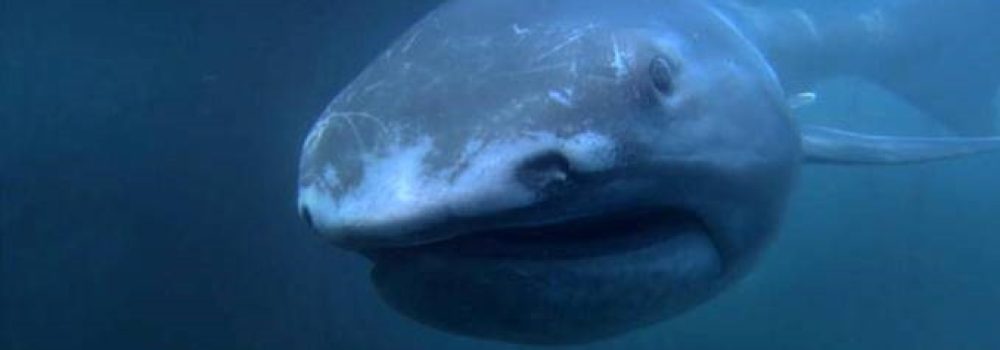
The megamouth shark is also an allusive shark species and is the smaller of the three filter shark species recorded. They feed on planktonic prey which leaves them to hunt with their mouth, which is on average 1.3 meters wide open to filter their prey from the deep ocean.
Little is known about this species because of how they hide in the depths of the ocean, but they are typically found near Australia, Taiwan, and Japan. An interesting fact about these sharks is that scientists believe their lips are bioluminescent to attract their smaller plankton and shellfish to them. The megamouth sharks are slow swimmers, not only to help with filtering but because of their body structure, their head structure compared to their body makes moving quickly difficult which is why the darker parts of the oceans are of great safety for this species.
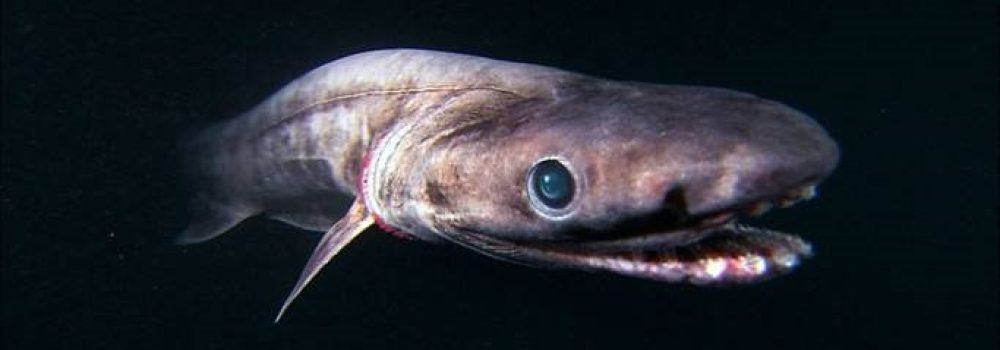
Another rare species is the frilled shark, which is one of the more primitive shark species named after their similar snakelike appearance. This is due to the lack of competition because it inhabits the deep-deep ocean of below 1000 meters, where other predators are limited at the ocean’s seabed.
These sharks have around 300 three-pronged teeth and feed mostly on squid an other shark species. Because of how rare the sightings are for this species, their habitat records are fairly patchy, mainly in areas such as northern Scotland, Chile, Namibia and Southern California, South Africa, and Japan.
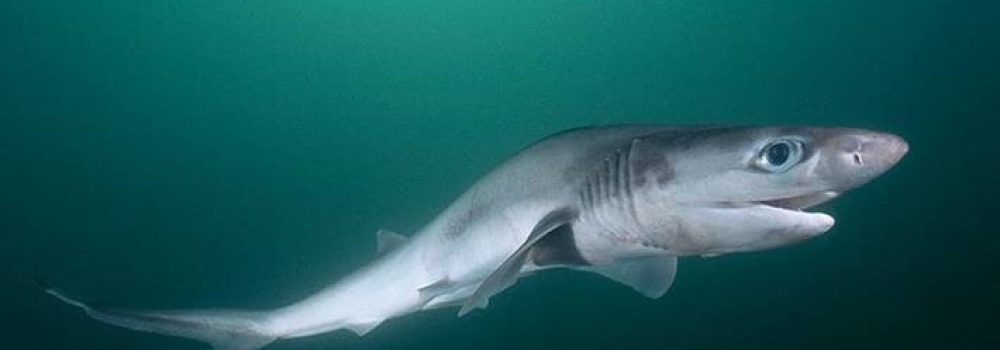
The Sharp-nose Sevengill, not to be mistaken for the Broad nose Seven gill which we see in False Bay, is considered rare not only because they have limited numbers but because records of them have been sporadic throughout the years. These sharks are on the smaller side growing up to 139 cm and swim around the 1000-
meter mark, close to the sea bottom. They are also seen all over however not in the northern Pacific due to the colder temperatures.

Bird-beak Dogfish are also part of the rare shark species and are also known as the Brier shark. This species because of the depths that they live in, are not often seen by people, existing below 1500 meters but can be seen when hunting as they can come up to 200 meters to prey on squid, crustaceans, and other fish.
They have a worldwide distribution but are more commonly found in the British Isles. Their distinctive snouts and their green eyes are what set them apart from other shark species, both evolved to hunt in the deeper darker ocean areas and they are small in size around 90 cm although because of their limited sightings, there is no minimum size recorded.
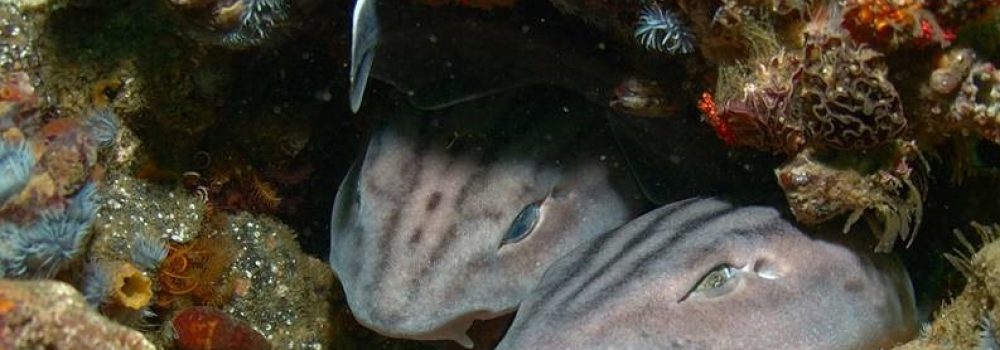
Another smaller shark species is the pajama shark, a catfish species that is right here in False Bay and are considered low on the sightings radar because of its habitat and hunting choice. These sharks mainly live along Southern Africa and South East Indian coastlines, and only hunt during the night on crustaceans,
brittle worms, small batons, and hagfish. These beautiful species hide during the day in the Rocklands and caves in kelp forests and only grow around 101 cm. Pajama sharks only produce two eggs at a time and because there are no conservation efforts currently in place, this means they are increasingly threatened.
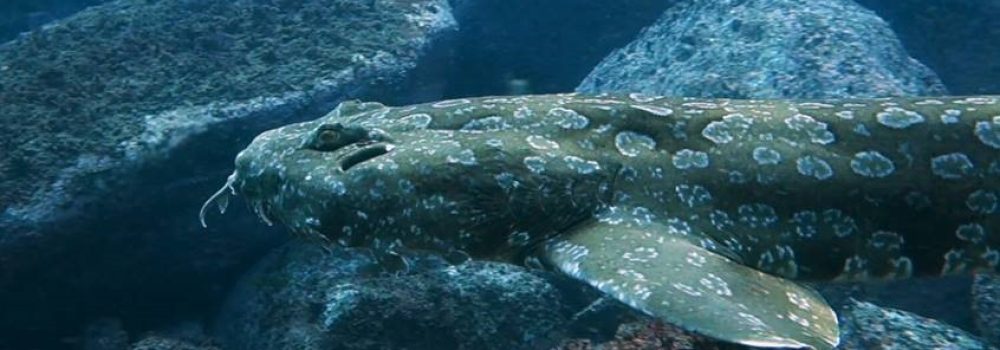
The next small shark species is the Ornate Wobbegong shark species, which is one of the more unique-looking species on the list because its body resembles the flora on the seabed allowing it to camouflage amazingly. This camouflage is created from the skin’s flap-like texture and helps when hunting as these sharks
remain motionless until they grab their prey such as snappers, eels, and ludericks. They hunt mostly at night and when they aren’t hunting, they go into a ‘sleep-like’ state often on the sand near rock caves. An interesting fact about their coloring is that their age can be seen in it because they lose color with age. Ornate Wobbegong are approximately 130 cm in size and although are on the smaller side, their bites can be quite painful and they often accidentally bite divers because they can hide so well. Their physical characteristics and the fact that commercial fishing has depleted their numbers, they are not seen often by people.

The last shark on this list lives in the tropical rivers near coastlines and is the Spear-tooth shark. They can be found in both freshwater and saltwater, but are more commonly found at the bottom of rivers and are found near Australia and New Guinea where there are western Pacific waters in depths of 10 meters.
Spear-tooth sharks have adapted to hide in the cloudy river waters, matching their greyish tone, and hunt primarily on the fish in near-complete darkness. They are a whaler shark species, grow to approximately 2.6 meters, and use the currents to move around due to their sluggish nature. Habitat degradation and their low populations, like many other river shark species are the reasons they are so rarely sighted with approximately 2500 in total.
Sharks are amazing creatures that have evolved based on their environmental needs. The rarity of the different species is greatly affected by human involvement, commonly overfishing which depletes the numbers or their adaptation to living in the deep ocean areas where divers were unable to go until recently. Our oceans have only had eight percent of their corners explored, leaving a mass amount of hiding spaces not only for known but unknown shark species. Apex Shark Expeditions provides the best kelp forest diving cape town and shark cage diving cape town. If you enjoyed this article, you may also be interested in our other article, where we discuss, the best shark diving destinations.

